【Introduction】 The objective of the present study was to conduct. Immediate Stroke Life Support (ISLS) with the aim of promoting the knowledge of standard treatment procedures in acute stroke care. Because the professions of participants and their purposes of participation varied greatly, the purpose of participating in ISLS were elucidated for each profession.
【Methods】 Subjects were a total of 122 individuals participating in ISLS in Yokohama, specifically 45 doctors, 66 nurses, and 11 emergency medical technicians (EMT). A questionnaire survey including multiple-choice and written responses was conducted following conclusion of ISLS, and the purpose of participation was analyzed for each profession based on the responses.
【Results】 For all professions, the purposes of participation were “necessary for everyday duties”, “skill improvement”, and “other”. Regarding the degree of achievement of the purpose of participation, over 97% of participants felt they were capable of implementing ISLS, with no differences among professions.
【Discussion】 These findings reaffirmed that participants participated in ISLS because they recognized the need to provide acute stroke care. ISLS was also effectively used for improving skills. The present findings indicate that ISLS is useful for achieving the purpose of participation.
View full abstract
